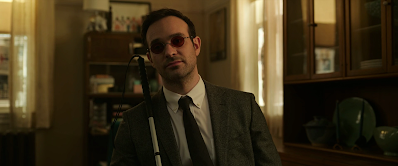Note: This review contains spoilers for Sam Raimi’s Spider-Man trilogy, Marc Webb’s The Amazing Spider-Man duology, the Marvel Cinematic Universe and Sony’s Spider-Man Universe.
After Thanos’ defeat, we had largely lost interest in the Marvel Cinematic Universe. This wasn’t due to any sudden dislike of the brand, but rather that it had turned into more of a lifestyle and the time commitment to keeping up felt unwieldy. Still, there were some movies and shows we had some interest in watching and the multiversal Spider-Man: No Way Home was one of them. During its initial 2021 theatrical run, we still didn’t feel safe going back to a theater due to its high demand, so we patiently waited until a 2022 Blu-ray release, miraculously dodging all spoilers in the process. Fortunately, the wait was well worth it and even though we initially only had interest in the reappearance of the Sam Raimi cast, we ended up liking everything else the film had to offer.
Immediately following the events of Spider-Man: Far From Home, the entire world knows that Peter Parker (Tom Holland) is actually Spider-Man, though they are convinced that he killed Mysterio. Lawyer Matt Murdock (Charlie Cox) helps drop Peter’s charges, though the court of public opinion doesn’t completely agree. Due to the controversy, Peter gets rejected from every college he applied to, including MIT, as do his girlfriend MJ Watson (Zendaya) and friend Ned Leeds (Jacob Batalon), who are rejected by association. Out of desperation, Peter seeks help from Dr. Stephen Strange (Benedict Cumberbatch), who casts a spell that will make the world forget that Peter Parker is Spider-Man. However, Peter corrupts the spell by repeatedly asking for alterations, forcing Dr. Strange to contain it before it can damage the fabric of reality. Soon after Peter is kicked out of the New York Sanctum, he learns first-hand that although the spell was contained, his interference had consequences far greater than he had ever imagined.
Of the three solo Spider-Man films in the MCU, No Way Home easily has the strongest writing. Just in terms of the MCU’s Peter Parker, he feels less dependent on Tony Stark’s technology than he did in the past and goes through a well-developed character arc about not only the weight of his responsibilities, but not giving in to the darkness in one’s heart. His experiences dealing with the negative perception from the public, his few friendships and personal loss also make him more emotionally mature than he was before. By the end, he has clearly fully grown into the role of Spider-Man and has a clearer path for his future as a hero. While there are plenty of laugh-out-loud moments, the more emotional moments feel very poignant and powerful and inform Peter’s arc. The very end of the film (before the credits) may not work as well for some, but it provides a ray of hope that things will work out for him in the end.
 |
| Peter Parker's (Tom Holland, left) interference with Dr. Strange's (Benedict Cumberbatch, right) spell has catastrophic consequences. |
Dr. Strange, the other major player from the MCU, comes off as a more interesting character than he did in his own self-titled movie, which felt like school. Here, he shows great strength not only as part of a team, but as a coldly realistic foil to Peter thanks to their very different perspectives. Where Peter thinks of the more immediate future and not necessarily the consequences of his actions, at least at first, Dr. Strange is aware of the greater multiverse and thinks more of how everything fits into the bigger picture.
There’s also a cameo from Matt Murdock, aka Daredevil, where he acts as Peter’s attorney. While he immediately stands out in his only scene, his integration leaves a little to be desired. Since his actor, Charlie Cox, is reprising the role from the ambiguously canon Netflix Daredevil series from 2015, No Way Home takes the audience’s knowledge of him for granted. A quick introduction of him where the audience meets him at the same time the characters do would have helped a bit here.
 |
| You're expected to already know who Matt Murdock (Charlie Cox) is. |
As implied earlier, No Way Home doesn’t just involve the MCU, but the greater multiverse as a whole, as characters from the Sam Raimi Spider-Man trilogy and Marc Webb’s The Amazing Spider-Man duology make an appearance. Specifically, we see Green Goblin (Willem Dafoe) from Spider-Man (2002), Doctor Octopus (Alfred Molina) from Spider-Man 2 (2004), Sandman (Thomas Haden Church) from Spider-Man 3 (2007), Lizard (Rhys Ifans) from The Amazing Spider-Man (2012) and Electro (Jamie Foxx) from The Amazing Spider-Man 2 (2014). The logic behind their involvement has a very clear explanation that’s easy to follow, which helps the story not get bogged down by explanations and focus instead on the main story. Even the number of villains has a throwaway justification, since Peter altered the spell five times (though Dr. Strange counted six, more on that later).
Despite the difference in writing styles between the original films and the MCU, all of the villains who appear feel in-character or, in the case of The Amazing Spider-Man, are even improved. Their characterizations, where most are antagonistic towards Peter at first, are even neatly justified through the implication that they were teleported to the MCU just before their redemption. The film also does an impressive job of balancing five villains by giving them just enough time in the spotlight without bloating the runtime or drawing too much attention away from what’s important.
Of course, the most well-known aspect of the film is not just the appearance of the villains, but Tobey Maguire and Andrew Garfield also reprising their roles as Peter Parker/Spider-Man from the Sam Raimi and Marc Webb films respectively. Their characterizations are consistent enough from their original appearances that they really feel like the same characters, but like the The Amazing Spider-Man villains, Andrew Garfield’s Spider-Man is improved here. Here, it’s clear that his character has matured, which gives him a bit more depth that makes him more convincing as a good Peter Parker and Spider-Man. One could even say this film redeems The Amazing Spider-Man and that it’s a sign that Marc Webb’s films were held back more by bad writing and poor executive decision-making.
 |
| Tobey Maguire (left), Tom Holland (center) and Andrew Garfield (right) have great chemistry. |
When the two Spider-Men inevitably join Tom Holland’s Peter Parker, the three of them have incredible chemistry. Since the three of them understand each other in a way no one else can, they can have a heartfelt conversation about loss and how it affected them, as well as exchange notes about their adventures and the differences in their universes, with convincing surprise, awe and confusion. For instance, the MCU and Webb Peters are impressed by Raimi Peter’s organic web shooters and the Raimi and Webb Peters are confused when MCU Peter mentions the Avengers. They even give each other good moral support, including one conversation with some interesting subtext regarding the reception of The Amazing Spider-Man, and can work really well together as a team. As such, these interactions are easily the most enjoyable part of the movie and a big reason to see it.
The only issue, however, is that by the time we saw the film, the three Spider-Men interacting had lost its impact. It’s clearly written as a shocking reveal, but the early set photo leaks and later ads for the film, especially the ones for home video, take the knowledge of their presence for granted. It’s still cool when it happens and the introductory scene is very enjoyable, but the wow factor is gone unless you somehow went in completely blind.
Aside from the strong writing, No Way Home has impressive (and clearly very expensive) visuals, both for the easy-to-follow fight scenes and the visit to the mirror dimension. Every character from an alternate universe also looks how they did in their original appearances, but with some alterations to bring them more in line with their comics counterparts. For instance, Electro’s electricity is colored yellow (with a subtle nod to the original comics costume during some attacks) and Green Goblin’s costume gradually resembles his comics version more closely. There’s also an odd decision where Sandman spends most of time in a body made of sand despite Spider-Man 3 showing him capable of returning to his human form, though I’m not aware of what factors influenced that decision. Eagle-eyed viewers may also notice some archived footage towards the end of the film.
 |
| The visuals continue to impress. |
Equally as impressive is the acting, even from the cast of The Amazing Spider-Man. J.K. Simmons has more screentime here as J. Jonah Jameson than he did in Far From Home, but still absolutely kills it in the role. Tobey Maguire, Alfred Molina and Willem Dafoe are also major highlights of the actors not native to the MCU.
The credits sequences also contain their own surprises, which deserve their own section here separate from the rest of the film. In the mid-credits, there’s a short scene where Tom Hardy reprises his role as Eddie Brock and Venom from Venom (2018) and Venom: Let There Be Carnage (2021). It isn’t much, but does tie in with Dr. Strange’s mention of six alterations to the memory spell and sets up something for a future film. After the credits, we get the assurance that Dr. Strange will return, but in the form of a glorified ad for Dr. Strange in the Multiverse of Madness. Though Marvel did this before with a short teaser for Marvel’s The Avengers (2012) at the end of Captain America: The First Avenger (2011), it feels out of place here, partly from Sony advertising a Disney film and partly because the Avengers teaser felt more like part of a natural progression.
Naturally, one might consider comparing No Way Home to Spider-Man: Into the Spider-Verse, which is completely valid since both revolve around the similar concept of multiple Spider-Men meeting each other from across the multiverse. The main difference between the two, however, is that someone could better enjoy Into the Spider-Verse as a standalone film while No Way Home requires watching a few films as a pre-requisite. While it’s certainly a bad idea to start a trilogy from the third part, it goes beyond just two films for No Way Home. If someone wanted the full experience from the film and understand everything referenced, they’d need to watch, at the absolute bare minimum:
1) Spider-Man (2002)
2) Spider-Man 2 (2004)
3) Spider-Man 3 (2007)
4) The Amazing Spider-Man (2012)
5) The Amazing Spider-Man 2 (2014)
6) Captain America: Civil War (2016)
7) Doctor Strange (2016)
8) Spider-Man: Homecoming (2017)
9) Avengers: Infinity War (2018)
10) Avengers: Endgame (2019)
11) Spider-Man: Far From Home (2019)
12) Venom (2018)
13) Venom: Let There Be Carnage (2021)
 |
| That's a lot of movies! |
But this list really only applies if you’ve already been keeping up with the MCU. If you haven’t, then you could be in for more of a long haul, since understanding Avengers: Endgame requires watching all twenty-one movies that had come before it. Fortunately, you can go straight from Far From Home to No Way Home, but that still means a potential commitment of up to thirty films before watching this one. This does open up a conversation about the MCU’s increasing inaccessibility, but that’s a whole other topic.
Commitment issues aside, Spider-Man: No Way Home
is one of the best live-action Spider-Man films in recent memory. Aside
from the impressive fight scenes, the story expertly balances multiple casts while
also advancing Peter Parker’s character arc in a very poignant and meaningful
way. No matter which Spider-Man is your favorite, there’s really no reason not
to try and watch this film.


No comments:
Post a Comment